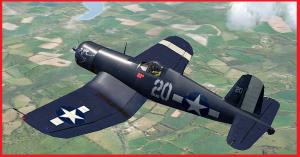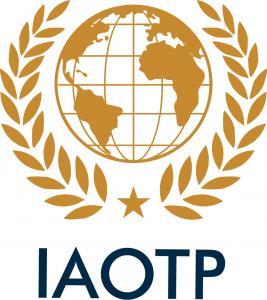ORLANDO, FL, USA, November 10, 2023 /EINPresswire.com/ — For centuries, sand tables have enabled armies to visually think through battle plans and answer important tactical questions. Such questions include: Where do we think the enemy will be positioned? And, where should we position our artillery to achieve an advantageous position to maximize lethality?
Currently, the Integrated Visual Augmentation System (IVAS) enables the Soldier to interact with holograms using hand gestures, such as finger tap maneuvers. A limitation of the hand gesture is the ability to precisely pinpoint a specific spot on a hologram. Fortunately, Tipping Point Military Innovation (TPMI) has had a string of patented improvements, which allow improved interaction with the virtual world.
An article published on 25 August 2023 discussed TPMI’s US 11,207,133, which provides a revolutionary way to interact with holograms, which is through using tangible tools. A Colonel could use TPMI’s tangible tool to precisely map force movements on the virtual sand table. The Colonel’s observers could follow the lines that the Colonel has traced using a tangible pointer tool into the virtual terrain. The Colonel can trace a particular path to designate where and how to perform a flanking maneuver. The Colonel will grow to love his tool.
An article published on 31 August 2023 discussed TPMI’s US 11,417,071 patent, which enables the tangible tool to perform a transformation of the actual data comprising the battlefield. The ‘071 patented technology enables a user the ability to select from an array of tangible tools and virtual tools to interact with the virtual world. The Colonel could use his tool to not only mark up the virtual volume, but also to manipulate the virtual volume too. The Colonel could grab a virtual tank with his tangible tool and re-orient it to a more appropriate orientation. The Colonel could use his tangible tool to carve a hole into a virtual bridge mimicking damage. The Colonel could use his tangible tool to grab a virtual air defense system and turn it upside down indicating that it is no longer functional. Thus, the ‘071 patent enables not only a markup of the battlefield, but a transformation of it. The Colonel will grow to use his tangible tool even more.
Today, TPMI will discuss its US Patent 11,798,249, which enables the tangible tool to alter the 3D virtual object’s appearance without altering the virtual object’s structure or orientation. This technology will significantly help Soldiers understand their mission.
First, consider a situation wherein a UAV equipped with LIDAR has mapped a unit’s area of responsibility (AOR). A virtual sand table is created of the AOR. Next, the unit intel officer (S2) is tasked to delineate the enemy and friendly elements and those elements which are civilian. The S2, with TPMI’s tangible pointer that is registered to the virtual sand table terrain and virtual objects therein, touches each of the enemy elements and turns them red without changing their structure and orientation. The S2 touches his unit’s own elements to change their appearance to blue and touches civilian units to change their appearance to green. The overall layout of the situation is instantly recognizable for the commander and staff to see using an IVAS upgraded with TPMI’s technology.
Next, consider a platoon leader briefing the platoon who is about to attack the assigned portion of an enemy force. It is critical that, once intervisibility between the platoon and enemy positions is established, fire is quickly and evenly distributed across enemy vehicles in the assigned sector. The platoon leader, using TPMI’s tangible pointer, puts a blinking spot on an enemy vehicle. All platoon members can quickly spot that particular enemy vehicle on TPMI’s virtual sand table using an IVAS improved with TPMI’s technology. Once that enemy vehicle is understood by the platoon, the platoon leader can use his tangible pointer to place a new blinking spot on the next enemy vehicle. And, so on.
Finally, consider a structure in a village that is suspected to house some threats. A UAV with LIDAR has acquired 360° views of the structures in the village. The LIDAR data is transformed into a 3D model containing the virtual structure. A squad leader can precisely point, using TPMI’s tangible pointer, to different portions on the virtual structure. Each Soldier will be able to see through their TPMI-improved IVAS exactly what the squad leader is pointing to, and each Soldier will be on the same page with regards to where and how to enter the structure.
Integrating TPMI’s ‘249 with TPMI’s ‘133, and ‘071 patented technologies into the IVAS is an important step towards enabling Army personnel to have the ability to interact with the OWT in training exercises and combat situations. TPMI aims to work with PEO Soldier and PEO STRI to integrate these novel technologies into the IVAS.
About the author: Dr. Robert Douglas is one of the few known retired Infantrymen who have 80+ USPTO awarded patents. This article discusses only a small subset of the vast array of novel technologies in the above patents. This was the 31st patent discussed in this series of articles that is relevant toward improving the military/ IVAS. An opportunity for TPMI to work with the Futures Command’s Army Applications Laboratory (AAL) was presented in a TPMI response to a AAL’s Terrain Shaping RFI in late October.
Dr. Robert Douglas
TPMI
email us here
![]()
Originally published at https://www.einpresswire.com/article/667605100/a-31st-major-improvement-to-the-integrated-visual-augmentation-system





